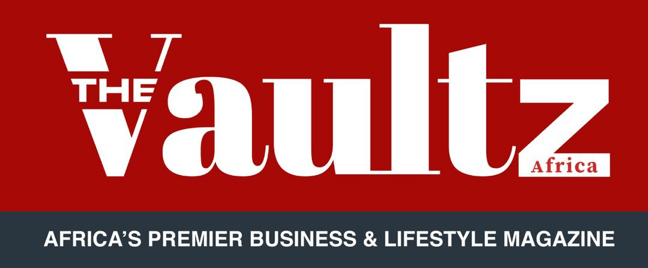
Kenya has crossed a fiscal threshold that has sent alarm bells ringing through boardrooms, markets, and households alike. As of May 2025, the East African economic powerhouse’s public debt hit a record KSh 11.51 trillion— a level that not long ago would have been unimaginable. The rise has not just been rapid; it’s been alarming.
Behind this towering debt figure lies a complex tale of ambition, necessity, poor planning, and economic shocks. But at the heart of the storm is one haunting question: Is Kenya’s economy on the brink of a crisis?
This is not merely a numbers game. It’s about livelihoods, future prospects, and whether government can still afford the dreams it sold its citizens.
To understand the weight of this financial milestone, one must look at its two legs: domestic borrowing and external debt. According to the National Treasury and the Central Bank of Kenya (CBK), domestic debt now accounts for over KSh 6.31 trillion, while external debt sits at around KSh 5.31 trillion— the latter significantly bloated by the depreciating shilling.
The major driver of this recent surge has been domestic borrowing, particularly through Treasury Bills (T-Bills) and Bonds. T-Bills, which are short-term government securities with maturities of less than one year, have risen to KSh 1.036 trillion as of July 2025, the highest level ever recorded. These instruments now form 16.85% of all domestic securities, a sharp climb from 11.75% a year earlier.
The trend signals a heavy government tilt toward short-term financing— a strategy that brings with it more risk than reward. These instruments mature quickly and need to be refinanced frequently, leading to what economists call “refinancing pressure.”
The long-term Treasury Bonds (T-Bonds) have also increased, now totaling KSh 5.11 trillion. Though they remain the backbone of domestic debt, their proportional share has slightly decreased due to the faster growth of T-Bills. It’s a worrying sign that short-term thinking may be overtaking long-term planning.
Shilling Woes Amplify External Debt Burden
While the nominal growth of Kenya’s foreign debt— from USD 39.77 billion in June 2024 to USD 41.07 billion in May 2025— may seem moderate, the impact has been significantly magnified in local currency terms. This is due to the sharp depreciation of the Kenyan shilling, which has made dollar-denominated debt much more expensive to service.
In just under a year, the shilling value of external debt ballooned from KSh 5.05 trillion to KSh 5.31 trillion. This is not just a matter of exchange rates; it directly affects how much the government has to set aside in budget allocations for debt repayment— money that could otherwise be used for development, health, and education.
With global interest rates still high and Kenya’s creditworthiness under scrutiny, rolling over or refinancing external debt has become costlier and riskier. Much of this debt is no longer on concessional terms. Commercial borrowing and syndicated loans carry higher interest rates and tighter conditions.
A Nation Paying for Its Past– Literally
Perhaps the most damning detail in this fiscal saga is the sheer cost of debt servicing. Between July 2024 and May 2025, the Kenyan government spent KSh 1.448 trillion on repaying debt — with more than KSh 1 trillion going toward interest payments alone. That’s not paying down the actual debt; that’s just the cost of borrowing.
To put this into perspective, Kenya’s debt service-to-revenue ratio now hovers between 69% and 70%. This is more than double the 30% threshold recommended by the IMF for developing economies. In simpler terms, for every 10 Shillings the government earns, 7 Shillings are being spent on servicing debt— leaving precious little for salaries, infrastructure, social services, or economic stimulus.
This is not just a fiscal red flag; it’s a social one. When a government’s revenues are hijacked by past borrowing, future development becomes a mirage.
The Debt Spiral: Short-Term Fixes, Long-Term Troubles
The current situation resembles a classic debt spiral. The government borrows to fill budget holes, then borrows again to pay off the previous loans, often at higher interest rates. As domestic borrowing accelerates and debt servicing consumes larger slices of the budget, there’s little room left for capital projects or economic expansion.
This has led to back-to-back reopenings of bond offers, as seen in June and July 2025. Within just two weeks, the CBK raised KSh 71.64 billion and KSh 66.65 billion through long-term bonds. These included 20- and 25-year bonds with yields as high as 14.35%, a clear sign that investors now demand more to lend to the government— because of the rising risk.
While institutional appetite for these long-term instruments may help the Treasury reach its KSh 635 billion net domestic borrowing target for FY2025/26, it does little to ease the pressure on short-term obligations.
Ratings Agencies Watching… Cautiously
Global credit rating agencies have not ignored Kenya’s fiscal tightrope walk. Moody’s, in January 2025, affirmed its Caa1 Positive rating— a speculative grade that suggests high credit risk, though with a slightly improving outlook. Fitch and S&P Global maintained their B− Stable positions, which still sit deep in junk territory.
These ratings affect Kenya’s ability to borrow externally— and at what cost. A downgrade could further restrict access to global capital markets, especially for Eurobonds or syndicated loans, pushing the country even deeper into reliance on domestic markets. And that’s the danger!
The more Kenya borrows domestically, the more it competes with private sector borrowers, pushing up interest rates across the board and slowing economic activity.
A Way Out?
Yes— but it won’t be easy. Experts suggest that Kenya needs a multi-pronged fiscal reset that tackles both expenditure and revenue issues.
On the revenue side, tax reforms must deepen, especially in areas like digital economy taxation, real estate, and untapped segments of the informal sector. The Kenya Revenue Authority (KRA) must double down on compliance, transparency, and digital collection systems.
On the expenditure side, the government has to cut wasteful spending, rein in procurement fraud, and streamline bloated public agencies. There must also be a shift from recurrent to development spending— with a hard cap on unproductive subsidies and political largesse.
Most importantly, Kenya needs to restructure and lengthen its debt maturities— essentially swap short-term debt for longer-term obligations with friendlier terms. This might require tough negotiations with lenders, possibly even under the G20 Common Framework or through a homegrown debt reprofiling program.
Public Trust on the Line
While these solutions are technical, the consequences are deeply human. The longer the debt burden grows, the more essential services get choked. Delays in teacher salaries, stalled road projects, rising inflation, and fuel price hikes are all symptoms of a government living beyond its means.
Public trust is already fraying. Citizens see the lavish lifestyles of some officials against the backdrop of rising taxes, cost-of-living increases, and a fragile job market. The burden of debt feels distant to policymakers but hits ordinary Kenyans squarely at the dinner table.
As one Nairobi-based economist recently puts it: “Kenya’s debt crisis is not a macroeconomic problem; it’s a kitchen-table issue now.”

A Fork in the Fiscal Road
Kenya is now at a crossroads. The KSh 11.5 trillion debt bomb is ticking, and every delay in meaningful action shortens the fuse.
It’s time for the political class to rise above short-term populism and make the hard decisions necessary to restore fiscal health. That includes cutting back on non-essential borrowing, publishing full debt transparency reports, and engaging Kenyans in honest conversations about the price of past excesses.
Kenya has weathered storms before— from droughts to pandemics— but this debt crisis is different. It’s a slow burn, one that saps national strength, weakens policy flexibility, and leaves future generations holding the bill.
Can Kenya Defuse the Debt Bomb?
The answer lies in a painful but necessary combination of discipline, political courage, and structural reform. Kenya’s debt crisis is not yet irreversible, but it is dangerously close to spiraling beyond control. To stop the bleeding, the government must pivot quickly. That means ending the reliance on short-term borrowing, restructuring its repayment plans, and tightening fiscal controls to eliminate wasteful expenditures. Transparency must improve— Kenyans deserve to know the full scale of public liabilities, including contingent debts from parastatals and government guarantees. Simultaneously, domestic revenue mobilization must be enhanced through smarter tax policies, better enforcement, and the digitization of the tax system.
However, time is not a luxury Kenya can afford. With public debt now at KSh 11.5 trillion, the pressure is no longer theoretical. It has real, human consequences— from unpaid civil servant wages and delayed infrastructure projects to rising fuel prices and growing investor unease. Every day that meaningful reforms are delayed increases the financial burden on future budgets, tightening the noose around critical sectors like health, education, and agriculture. The debt doesn’t just sit on paper; it filters into classrooms, clinics, and households. A sustained lack of action risks igniting social unrest as public frustration grows with deteriorating public services and the rising cost of living.
So, is Kenya’s economy on the brink? Perhaps not today, but the warning lights are flashing. Without a sharp and deliberate course correction, the road ahead could quickly darken. It’s no longer just about stabilizing numbers on a spreadsheet— it’s about preserving the promise of prosperity for millions of Kenyans. The debt bomb is ticking, and while there is still time to defuse it, that window is rapidly closing. What happens next will define the country’s economic future for decades to come.


